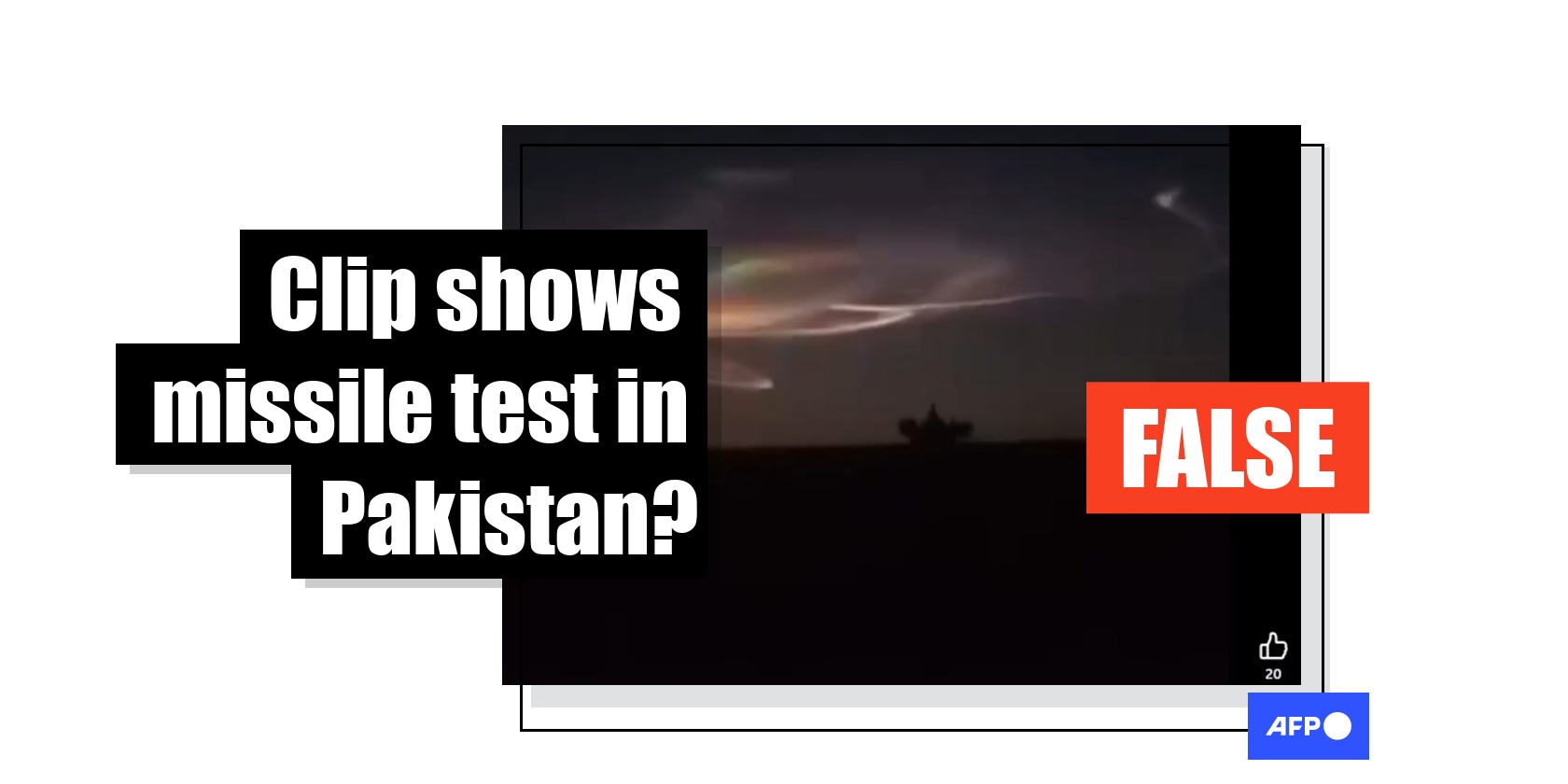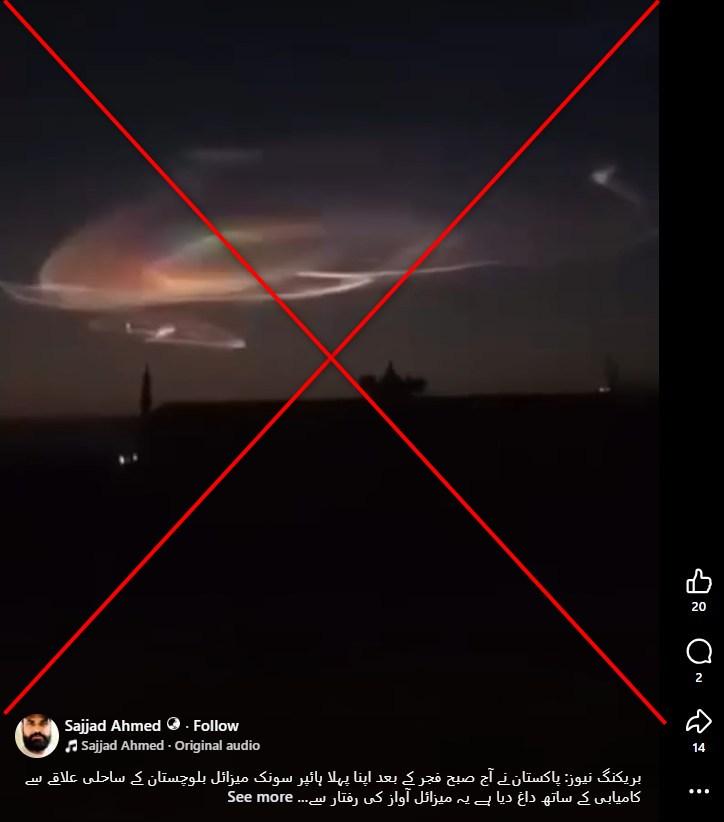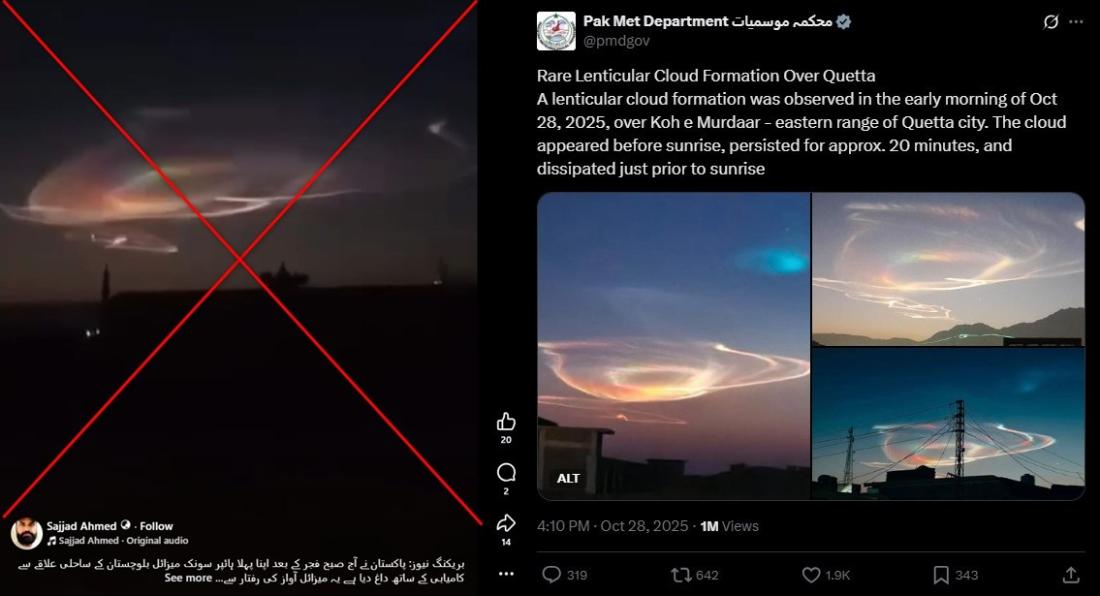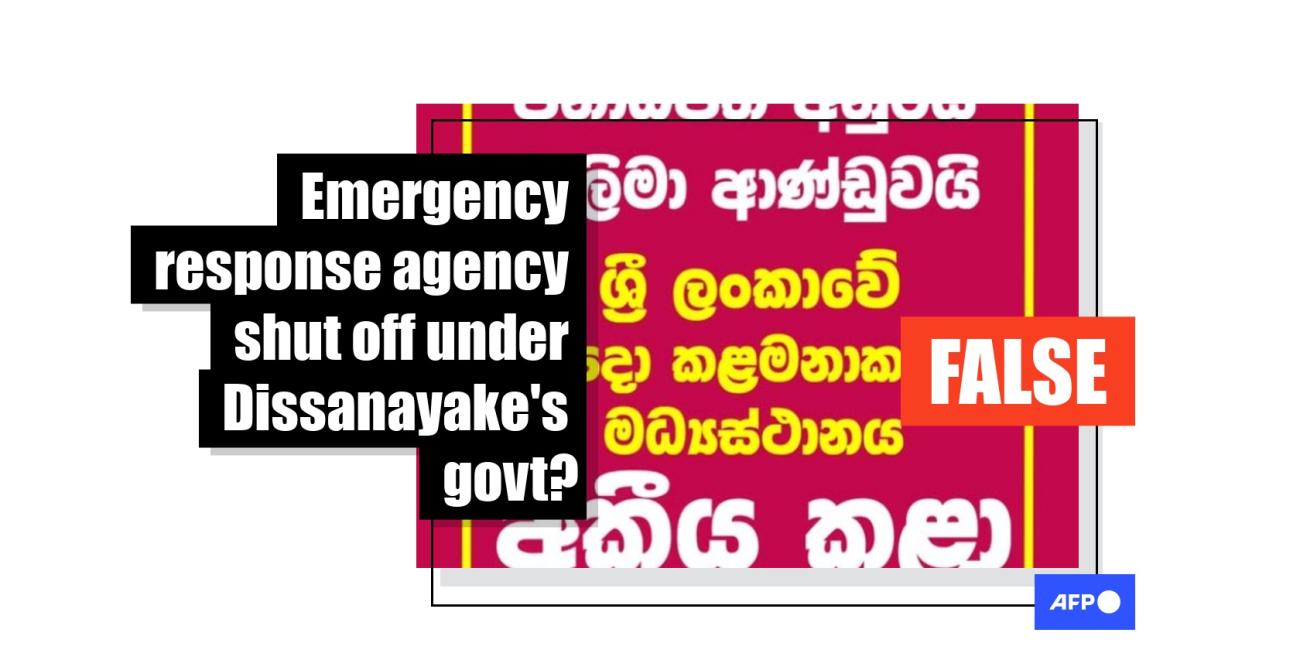
Visuals show rare cloud formation, not Pakistan testing long-range weapons
- Published on November 20, 2025 at 07:56
- 2 min read
- By Masroor GILANI, AFP Pakistan
Although Pakistan has conducted several missile tests in 2025, images and clips of a swirl of clouds in the sky circulating in social media posts in late October and November do not show the South Asian country launching a weapon. The Pakistan Meteorological Department identified the images as a lenticular cloud formation observed in the early morning of October 28 over the eastern Quetta city. The last reported missile test was held in September.
"Breaking news: Pakistan successfully test fired its first hypersonic missile after Fajar (pre-dawn) prayers in the morning from the coastal area of Balochistan," reads an Urdu-language Facebook post on October 28, 2025.
The post includes a video of a circular cloud formation that appears to be lit up.

The same clip was shared on X alongside similar claims, while other posts circulated different images of the cloud formation on Threads and TikTok in late October and on Facebook in early November falsely linking them to a purported missile launch.
Although Pakistan has reportedly test-launched missiles three times in 2025, there are no official reports of a missile being tested in October (archived link).
The latest training launch of the "newly-inducted" and "indigenously-developed" Fatah-4 Ground Launched Cruise Missile with a range of 750 kilometres (466 miles) was carried out on September 30 (archived link).
In an X post on October 28, the Pakistan Meteorological Department shared three similar photos showing the formation in the sky, and said it showed a "rare lenticular cloud formation" over the eastern city of Quetta observed the same day (archived link).
"The cloud appeared before sunrise, persisted for approx. 20 minutes, and dissipated just prior to sunrise," the post said, but makes no reference to the false posts linking the formation to a missile test.

The National Taiwan University's Chen Jen-ping, who studies atmospheric sciences, also told AFP in an email on November 20 that the main cloud structure in the picture resembles a lenticular cloud (archived link).
He went on to say the bright wiggling streaks under the cloud could be the edges of another lenticular cloud layer, or the trails from a fast-moving object such as aircraft condensation or -- in a "more unusual scenario" -- those from a malfunctioning rocket or missile.
According to the UK Met Office website, lenticular clouds "form when the air is stable and winds blow across hills and mountains from the same or similar direction at different heights" through the lowest layer of the atmosphere (archived link).
Lenticular is derived from Latin terminology altocumulus lenticularis which translates to "like a lens", and the flying saucer shape of these clouds make them the most common explanation for UFO sightings across the world, it said.
AFP has previously debunked false posts linking lenticular clouds to earthquakes.
Copyright © AFP 2017-2025. Any commercial use of this content requires a subscription. Click here to find out more.
Is there content that you would like AFP to fact-check? Get in touch.
Contact us




